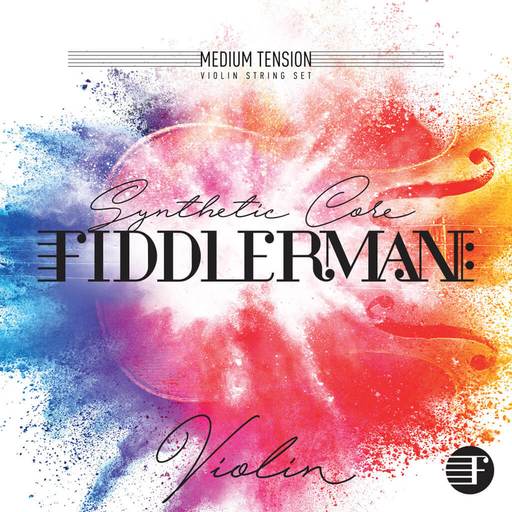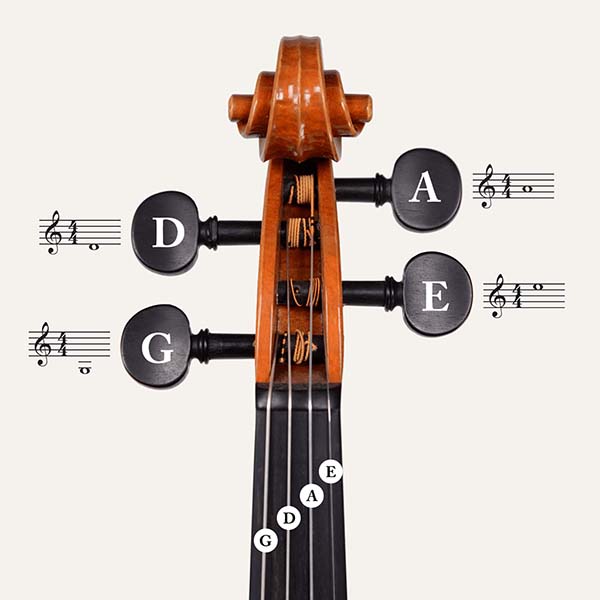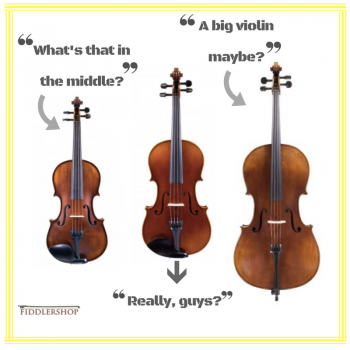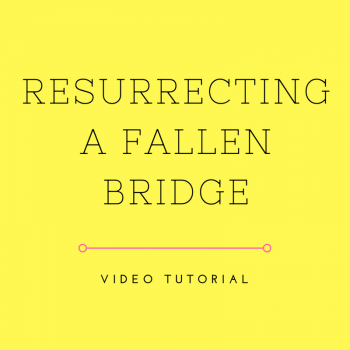A Guide to the Viola
By Jasmine Reese - For years, violas lingered under the shadow of the violin and cello; often referred to as the "big violin" or "small cello you hold under your chin" or "the deeper sounding one."
However, the viola's place in the string family goes back for centuries. With its dark alto tone, it's provided great inspiration for numerous compositions -- orchestral, chamber, and solo in form.
The viola isn't just the middle child of the string family; it's more like a cousin with its own unique and significant part in the world of instruments. In this guide, we'll cover the history, anatomy, and sound of the viola.
History
The evolution and development of the viola follows the timeline of the violin. In the 16th century, Andrea Amati began carving the violin and viola to life. He's considered the first-known maker of the instruments.

It's even funnier when people refer the viola as the big violin when we think of the historical derivation of the term "viola." According the Vienna Symphonic Library, the names of all stringed instruments came from the term “viola."
In the 1500s and 1600s, the viola da braccio and the viola da gamba described two families of stringed instruments. Da braccio means “played on the arm,” referring to horizontal playing positions. Da gamba, or “played at the leg,” is the vertical hold.
In the 1500s, there were treble, soprano, mezzo, alto, tenor, and bass stringed instruments. The alto and tenor viola tuned exactly alike with a lower C-string, G, D, and A. However, they were different sizes. When the 17th century brought about the booming and more robust Baroque-style of music, composers sought more defined soprano and alto sounds to give the orchestra more volume. Thus came the sad death of the tenor viola.
That's also when the modern string arrangement in an orchestra formed -- violin, viola, cello, and double bass. It's also cool to note that 1780 saw first instructional books on viola, according to the Vienna Symphonic Library.
Anatomy

Our modern viola is quite similar to the violin. However, it has some key differences.
Size. Violas range from 15 to 18 inches at its largest, while a violin only goes up to 14 inches. Violas are also wider.
Tuning and clef. Violas are the altos of the string family. They are not as high pitched as the violin, and not as low as the cello and double bass.
In fact, they don't even play in the same musical clef as the other string instruments. Violin always stays in the G or Treble Clef -- pictured below. Viola may venture into Treble clef. However, its home is the alto clef. That means, if you decide to learn viola, you'll learn to read notes in a different position on the musical staff than a violin or cello.
 The viola has four strings. Tuned C3, G3, D4, and A4. Like a violin, violas can also come in 5-string and even six-string customizations. There are electric and acoustic versions. The alto clef accommodates the pitch range of the viola, which goes from C3 to G5 on a piano.
The viola has four strings. Tuned C3, G3, D4, and A4. Like a violin, violas can also come in 5-string and even six-string customizations. There are electric and acoustic versions. The alto clef accommodates the pitch range of the viola, which goes from C3 to G5 on a piano.
Sound of the Viola VS the Violin
The viola is mellow and dark, giving a more haunting and human-like voice in many cases. It's perfect for someone who wants the horizontal playing position of the violin without the high pitch of the E-string, but also the exclusive timbre of a viola C, G, D, and A-string.
Like any instrument, your tone develops through practice, but your ear will catch the difference between a viola and violin.
Watch Fiddlerman play a violin.
Watch Fiddlerman play a viola.
Did you notice the difference?






